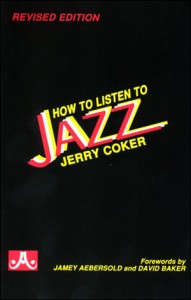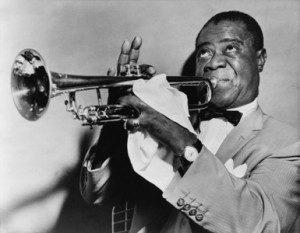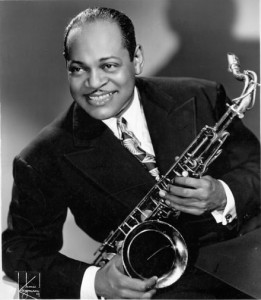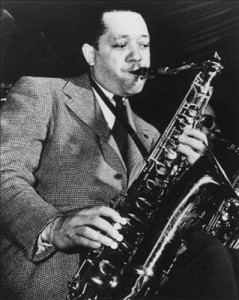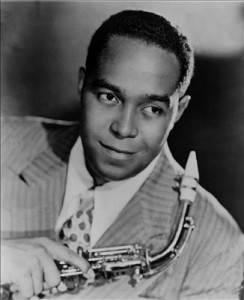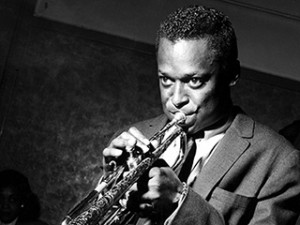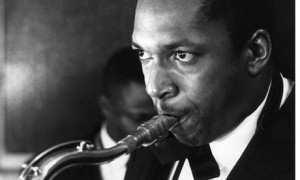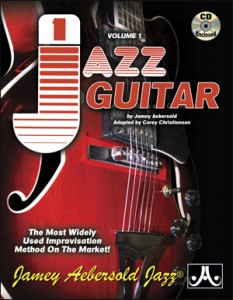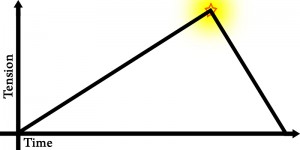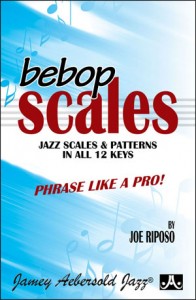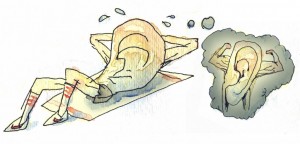There is a strange phenomenon in the world of musical arts, and that is the mysterious inability for musicians to move their bodies in a graceful manner in response to music. The closest I’ve ever seen to a dancing musician was a guy playing the ukulele while singing and riding a unicycle (incredibly, he didn’t even have a music degree!) While this is a quite impressive feat, it doesn’t really count, does it? I’ve really never met a musician who could truly dance. Like Rodents of Unusual Size, I don’t think they exist.
Point of proof: Myself.
When I was very young, my family once visited a rather sketchy “Native American” village, where ornately attired participants demonstrated a “traditional” ceremonial rain dance, and a few of us tourists were invited to try our hands (or, feet, as it were) at it. I gleefully took my place in the circle, and much to my delight, after only a few steps it actually started to rain – in reverse! A veritable torrent of rain drops began sweating out of the earth and bursting skyward! “What did you do?!!!” the feather-clad emcee screamed in a thick Brooklyn accent, as he proceeded to hurl himself head-first into a replica tee pee.
“I just danced!”
My Native American Tourist name is now “Tears From Earth.”
If pointless arrhythmic pitching and yawing to and fro, with no obvious rhyme, reason, or pattern, is ever considered “dance” — then I’m Friggin’ Fred Astaire (yes, “Friggin’ Fred” was his given name– look it up on Snopes!).
I can’t tell you how many times I’ve been tackled on the dance floor by a frenzied crowd of people, with someone inevitably crying, “For the love of all that is holy, somebody grab his tongue before he swallows it!” Indeed, this has happened so often that I am actually learning to like it. Needless to say, I’m now forced to wear a medical alert tongue stud which simply states “Trying to dance – please do NOT administer CPR.”
Other than secret Government experiments performed in the 50’s (leaked recently by Edward Snowden – who also can’t dance, BTW, and is therefore forced to try and get by on his good looks and Government secrets), there’s been no serious investigation into this chronic affliction. The experiments were eventually terminated because the sight of musicians trying to dance was freaking out the lab rats, prompting PETA to organize large scale demonstrations that eventually lead to “rat’s rights,” clearing the way for them to eventually take their places in society and congress (but, I digress). No one seems to know the cause, but, to be sure, many musicians have taken it upon themselves to try all manner of ill-advised pharmaceuticals to fix it. And failed. Even today, the world’s finest minds are still hard-pressed to explain this phenomenon.
But they never asked me…
My own life-long struggle with this situation (known by those in medical fields as Tuleftfeet Syndrome, abbreviated 2-LF), has prompted decades of introspective consideration on the subject. As such, I have concluded that, along with a natural 2-LF predisposition, we musicians suffer from a general lack of dancing experience. Unicycled savants aside, we obviously cannot be dancing and playing at the same time, so while civilians are dancing and honing their steps, we are the enablers allowing them to do so at great personal cost to ourselves. In other words, we facilitate our own demise and no amount of outside training, coaching, or solitary practice regimen, can overcome this lack of experience. Alas, we continue to flop around desperately like gaffed tuna on the deck of a ship. It is, sadly, a lost cause.
The Good News
The most recent issue of the American Journal of the Science of Terpsichore (Oan Lee/Joe King Publications) contained a groundbreaking article, “2-LF: Tripping Over the Light Fantastic” that has caught the attention of a much broader demographic than the small community of researchers focused on Tuleftfeet Syndrome. The article is making the rounds of large networks of enterprising music agents, wealthy art patrons and protégé-seekers worldwide, and rapidly turning the world of music on its ear.
The article posits that there is strong statistical and anecdotal evidence that symptoms of 2-LF begin to appear at an extremely young age. Using the time-honored practice of pseudo-logical if/then assumptions, the very presence of these symptoms would indicate a strong predisposition towards musical talent. Extrapolating that line of reasoning, severe affliction could be an indicator of savant-like musical talent!
Like the shot heard round the world, this single article has spawned a fledgling industry of scouts and talent agents, devoted to locating and nurturing the next generation of musical prodigies. As of this posting, most major music schools are already networking with various “Jack N Jill” styled dance schools all around the world in hopes of getting the jump on the next Chris Potter (terrible dancer – practically born with a saxophone in his mouth!) Specially trained preschool “croppers” identify specific dance patterns (or lack thereof) in young children and report them immediately to the national 2-LF databank. Letters of recruitment to the parents generally follow within days.
The article goes on to state that when properly diagnosed in early childhood, steps can be taken to match 2-LF victims with qualified specialists (band directors, piano teachers, etc.) Putting the right tools in the hands of 2-LFs and cultivating a healthy focus on musicianship early on can, theoretically, keep these dance floor menaces on the correct side of the footlights, and reduce the chance of them doing greater harm to the general public.
Knowing if you have 2LF
In the interest of the public welfare, below is a short listing of sample diagnostic criteria for A2-LF (Adult Tuleftfeet Syndrome) copied from the original article:
6 Signs That You, or Someone You Love, May Have 2LF:
-
1. “Actual” dancers smirking, pointing in your direction, and mimicking grand mal seizures to thunderous laughter.
-
2. Counting out loud while dancing. (Example: “1,2,3, oops -1,2, Sorry! Um…1…1,2…wait a minute…can we try that again?…I’m lost.” *
-
3. Choosing only dance partners with attractive shoes.
-
4. A detached awareness of one’s surroundings, and a fixation on those shoes.
-
5. Distinct indications of extreme wear on the toe area of your partner’s previously attractive shoes by the end of the dance.
-
6. Accepting cash, meals, drinks, or livestock in trade for musical performance.
* Actual transcripts from 2LF sufferers. Tragic!
There are, obviously, many, many more diagnostic criteria – the above is just the tip of the iceberg. Likewise, there are additional criteria for diagnosis of 2-LF in children, but this is best left to the professionals. It is recommended by the TS Foundation of America and Other Places That Are Not America that all children be screened for 2-LF before entering preschool.
If you, your child, or somebody you know displays any of the above symptoms, please don’t wait. Take him or her to a music teacher, musical-care provider, or specialist in dance conversion therapy immediately. In many cases, denial is as harmful as the disease itself.
Classic symptoms of 2-LF and undiscovered musical talent:
https://www.youtube.com/watch?v=5xi4O1yi6b0&index=3&list=RDDY_DF2Af3LM
Recently released archival footage of a musician trying to dance. *Warning* Content may not be appropriate for all ages. Viewer discretion is advised.
http://theuglydance.com/?v=vgkoncyxzk
Next Post: Why Dancers Are Great Musicians
